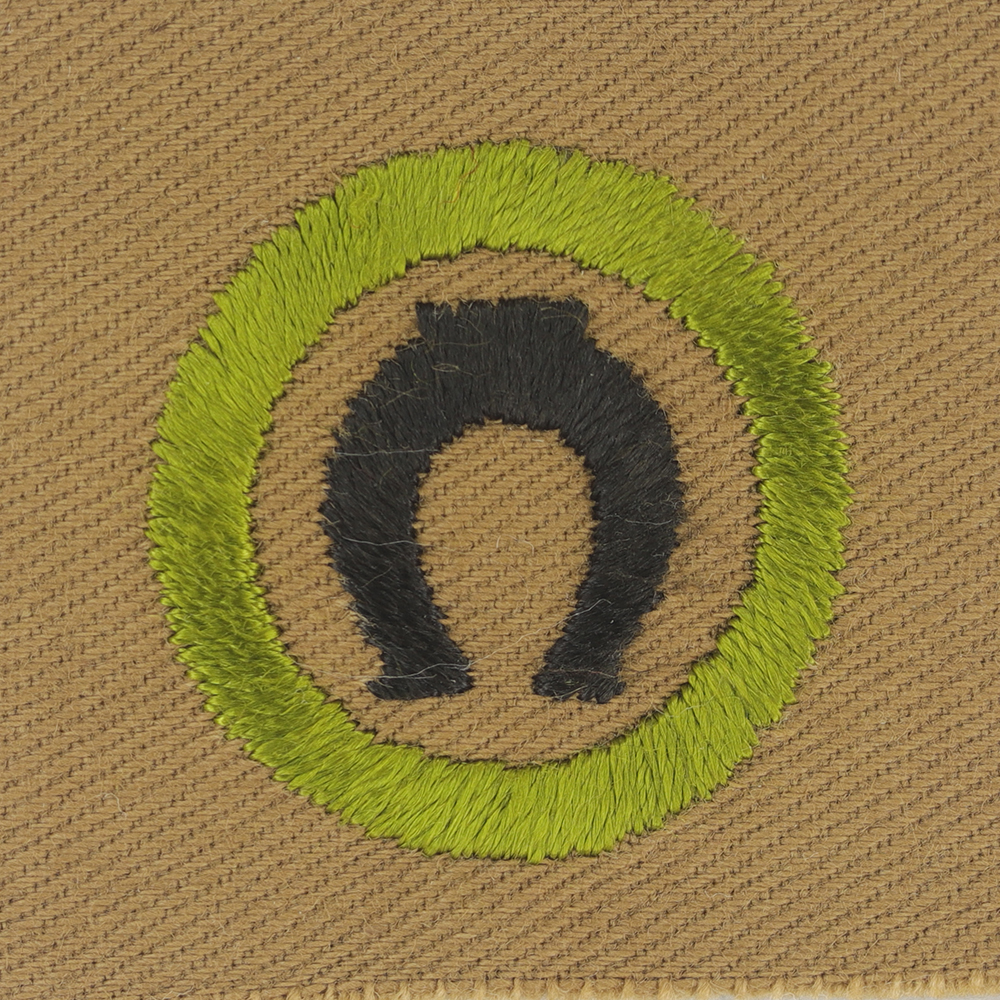
Fig. 1: Horsem-AT1-Front
- Cloth: Heavyweight tan right twill
- Embroidery: Silk continuous
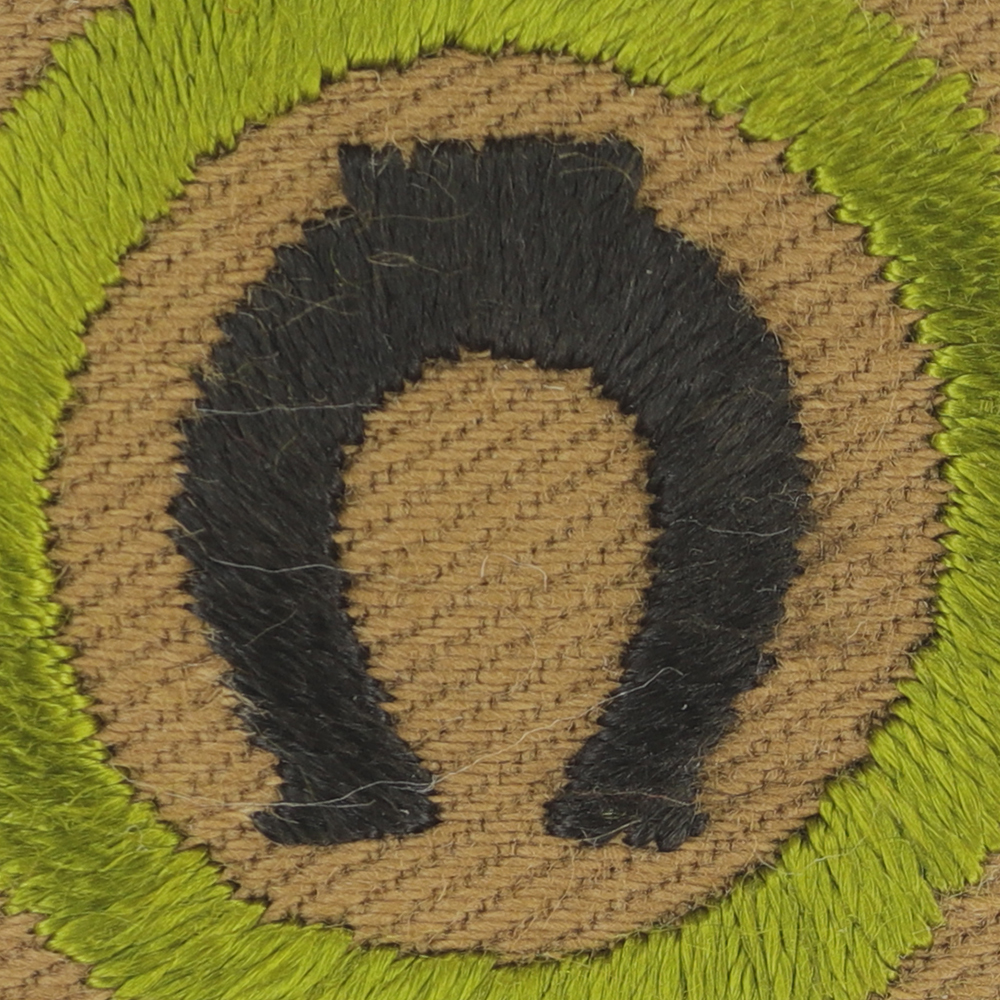
Fig. 2: Horsem-AT1-Magnified
- Design: Black horseshoe
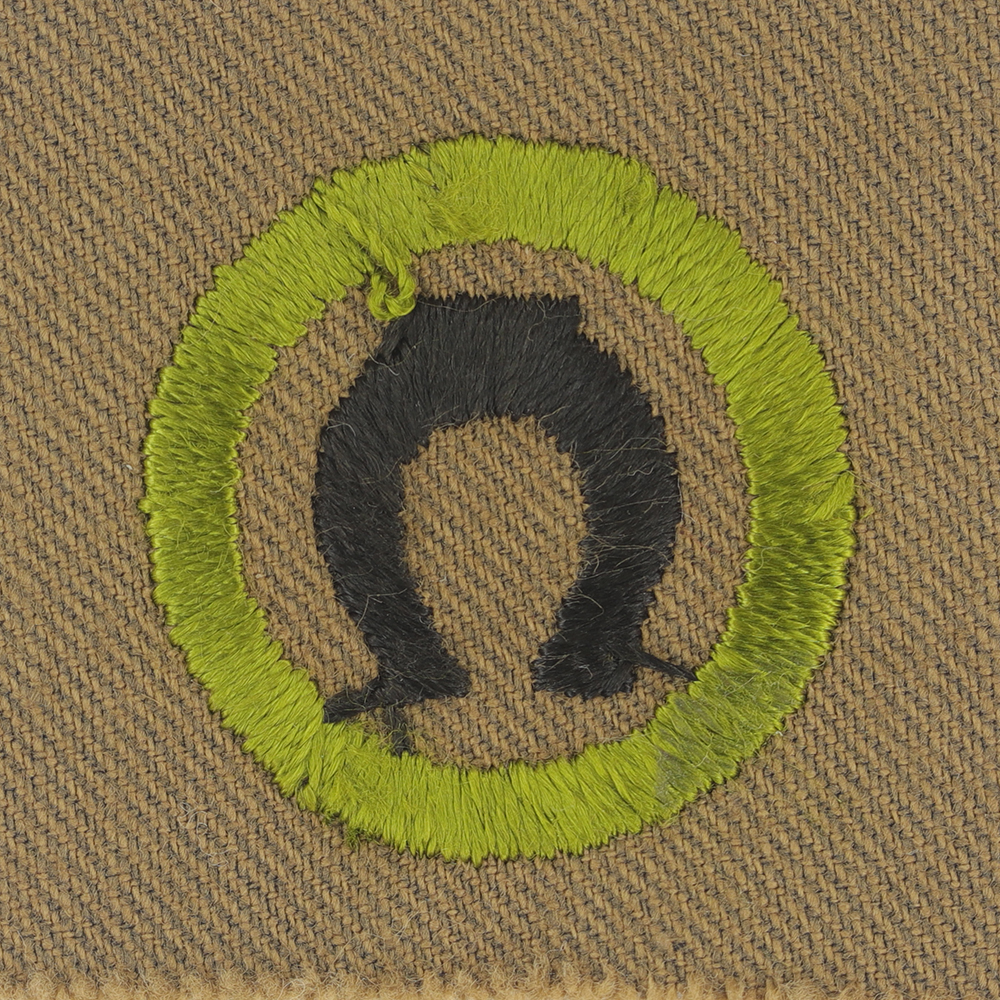
Fig. 3: Horsem-AT1-Reverse
- Back: Black imprint
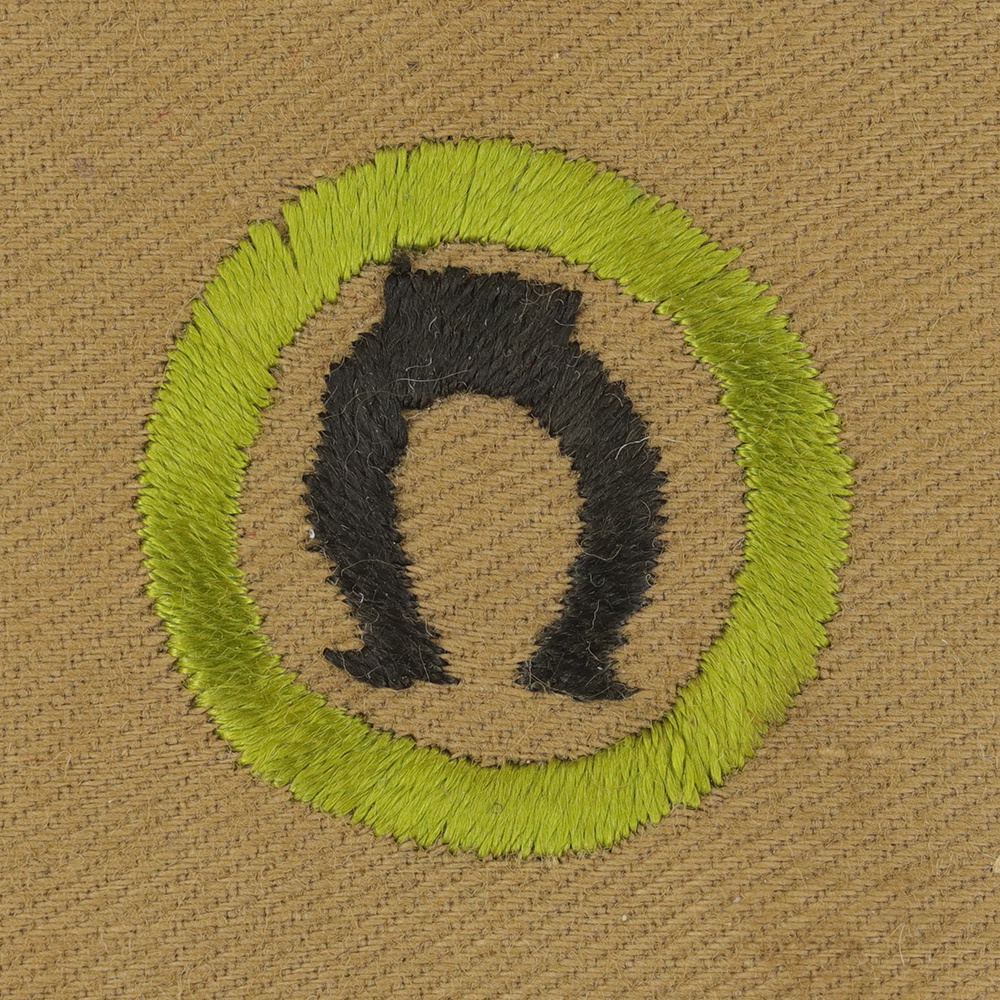
Fig. 4: Horsem-AT1-mve1-front
- Minor variation: Horseshoe is shewed to the left eye differences
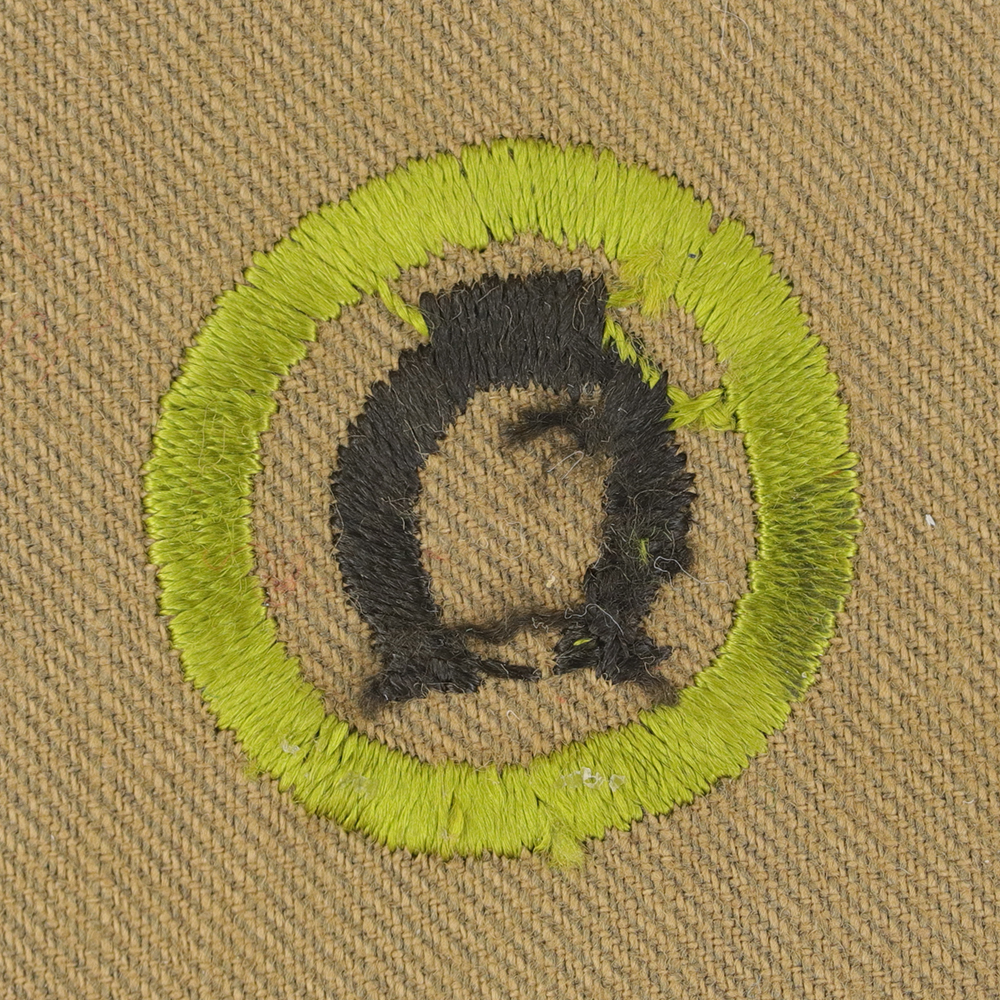
Fig. 5: Horsem-AT1-mve1-reverse
- Back: Black imprint
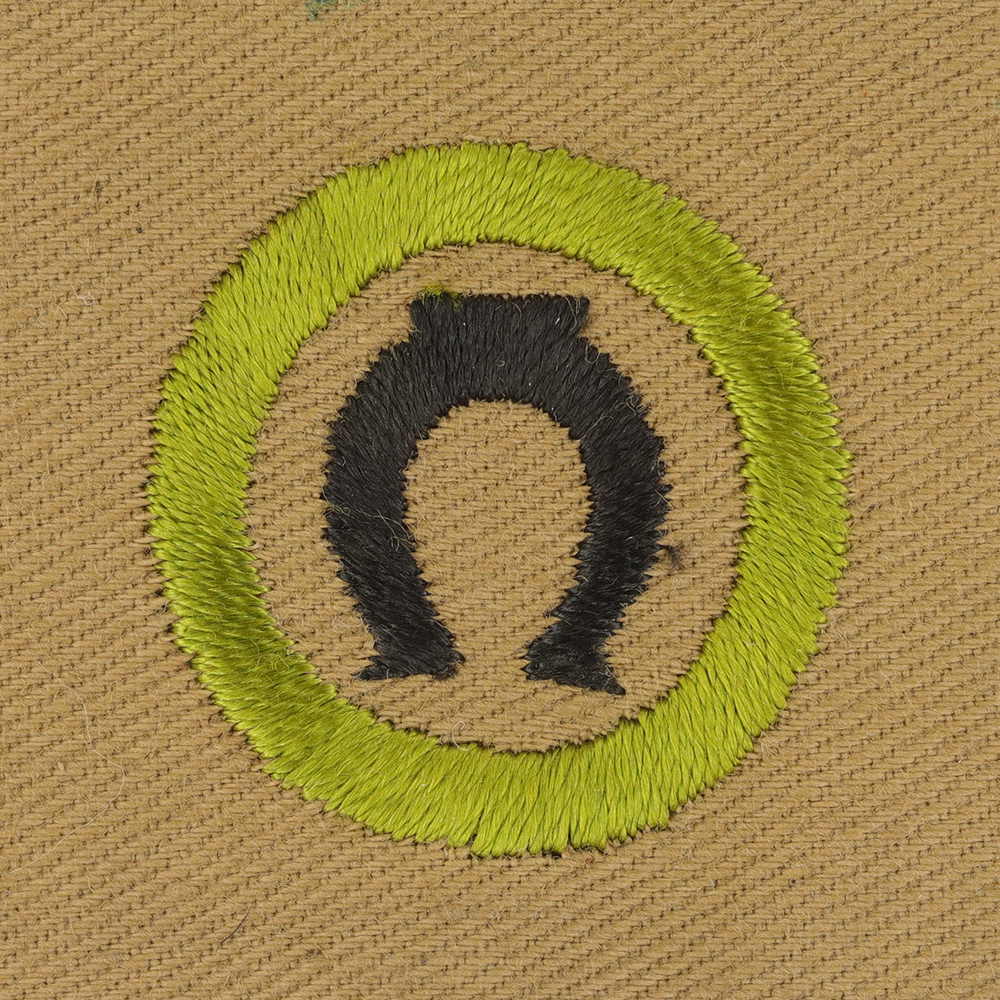
Fig. 6: Horsem-AT1-error1-front
- Cloth: Heavyweight tan right twill
- Embroidery: Silk continuous
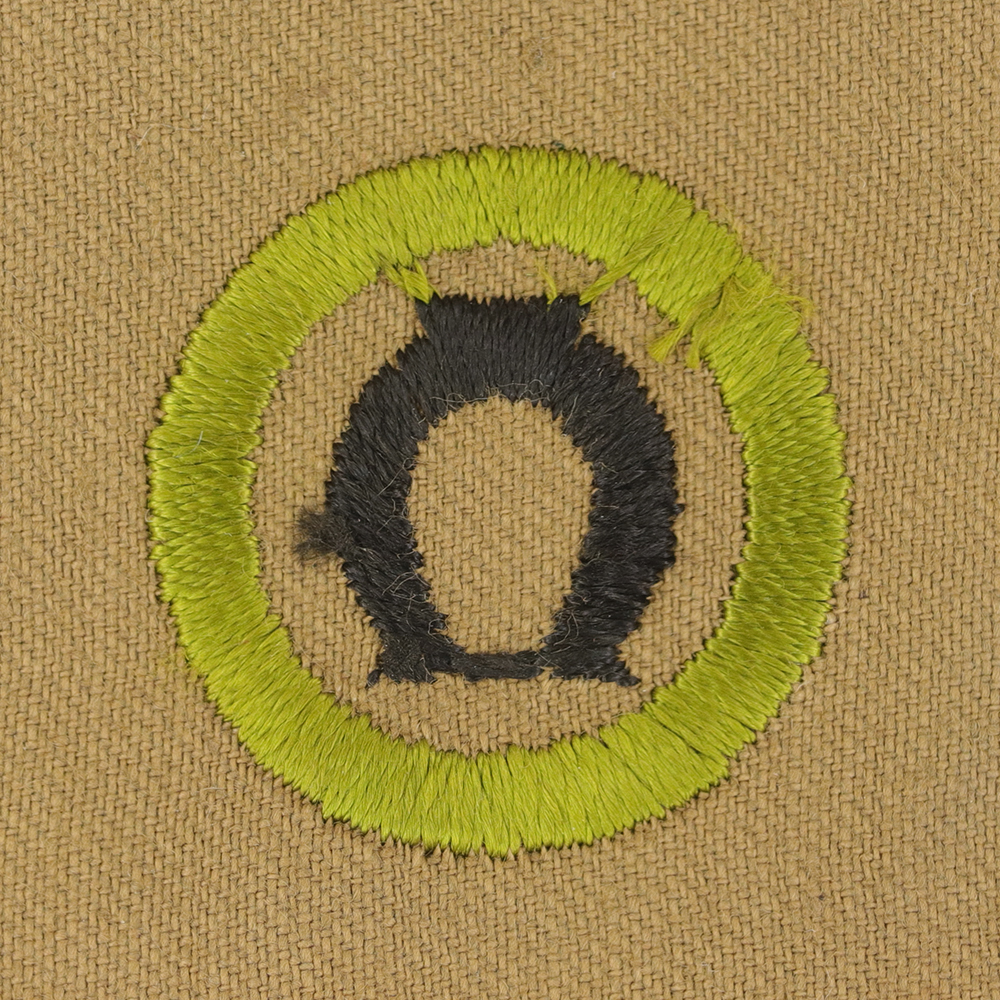
Fig. 7: Horsem-AT1-error1-reverse
- Manufacturing error: Type 1 error; plain back
Item Name: Horsemanship 1920 - 1933
Item ID: Horsem-AT1
Collector Rating: 1
Pamphlets Used to Earn this Badge
Requirements October 1914 until April 1923
1. Give the common name for the right and left sides of a horse, and state, using the common name, what side of a horse is habitually approached, and how to act while doing so.
2. State principal temperamental requirements of a good horse, also principal external points of a horse, and point out on a live horse thirty important points.
3. Know what defects and blemishes are. State the most common defects and blemishes, and how he would treat them.
4. Explain how he would examine a horse for soundness; and state the opinions of horsemen on the degrees of soundness.
5. Give several common diseases of the horse, the symptoms thereof, and the treatment.
6. State fully what he knows of the stable management and the care of a horse.
7. Point out ten important parts of the saddle, and show how he would put it on and remove it.
8. Point out ten important parts of the bridle, and show how he would fit, put it on, and take it off.
9. Illustrate on a horse the correct way of mounting and the correct position in a saddle.
10. Know the aids in riding and how they are used. Illustrate on a horse how he would move forward, increase or decrease the gait, halt, back, and change direction.
Requirements April 1923 until April 1930
1. Give the common name for the right and left sides of a horse, and state, using the common name, what side of a horse is habitually approached, and how to act while doing so.
2. State principal temperamental requirements of a good horse, also principal external points of a horse, and point out on a live horse thirty important points.
3. Know what defects and blemishes are. State the most common defects and blemishes, and how he would treat them.
4. Explain how he would examine a horse for soundness; and state the opinions of horsemen on the degrees of soundness.
5. Give several common diseases of the horse, the symptoms thereof, and the treatment.
6. State fully what he knows of the stable management and the care of a horse from actual experience of at least one month.
7. Point out ten important parts of the saddle, and show how he would put it on and remove it.
8. Point out ten important parts of the bridle, and show how he would fit, put it on, and take it off.
9. Illustrate on a horse the correct way of mounting and the correct position in a saddle.
10. Know the aids in riding and how they are used. Illustrate on a horse how he would move forward, increase or decrease the gait, halt, back, and change direction.
Requirements March 1931 until September 1937. Between September 1937 and January 1, 1938 these requirements were optional.
1. Give the common name for the right and left sides of a horse, and state, using the common name, what side of a horse is habitually approached, and how to act while doing so.
2. State principal temperamental requirements of a good horse, also principal external points of a horse, and point out on a live horse thirty important points.
3. Know what defects and blemishes are. State the most common defects and blemishes, and how he would treat them.
4. Explain how he would examine a horse for soundness; and state the opinions of horsemen on the degrees of soundness.
5. Give several common diseases of the horse, the symptoms thereof, and the treatment.
6. (a) State fully what he knows of the stable management and the care of a horse from actual experience of at least one month.
(b) A full period of handling a horse in an approved camp under competent leadership may be substituted.
7. Point out ten important parts of the saddle, and show how he would put it on and remove it.
8. Point out ten important parts of the bridle, and show how he would fit, put it on, and take it off.
9. Illustrate on a horse the correct way of mounting and the correct position in a saddle.
10. Know the aids in riding and how they are used. Illustrate on a horse how he would move forward, increase or decrease the gait, halt, back, and change direction.



